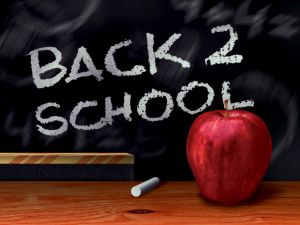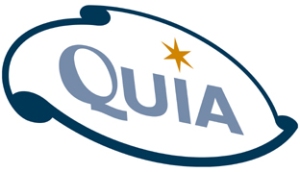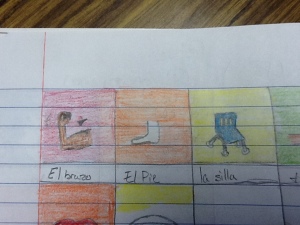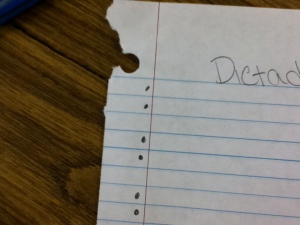 I have taken a good, long break from this blog. I needed some time to reorganize and think about a lot of personal and professional things. This blog has really made a difference in my professional growth and I am glad that it has been so helpful to so many of you out there. I think it is great that we can have communication even though we live so far away. Thank you for your encouragement.
I have taken a good, long break from this blog. I needed some time to reorganize and think about a lot of personal and professional things. This blog has really made a difference in my professional growth and I am glad that it has been so helpful to so many of you out there. I think it is great that we can have communication even though we live so far away. Thank you for your encouragement.
I want to be up front with all of my readers out there. I have decided that I am going to blog once a week. This will most likely be on Saturday morning. The goal for this year is to reflect at the end of the week on how it went, what went well, and what needs to be improved. This will allow me to be free during the week and to have a consistent time that I can look forward to blogging. Please feel free to leave any comments or suggestions.
Last year was a hard year for me. Especially, second semester. It wasn’t teaching or the kids, it was me. I was thinking about a lot of things and deciding whether or not I wanted to continue in the Public School system. Also, my wife and I had our first son this last year and if you have kids of your own, you know how that can take up some time. After weighing all of the pros and cons, I decided to stay in education. Not only to stay in education, but I told myself that this next year was going to be the best year as an educator. I proceeded to have one of the best summers I have had in a long time and to work from time to time on my weaknesses. Slowly, I found myself getting stronger with each passing day.
School started this last Monday and it was the best week I have ever had! It was amazing to experience the difference from previous years. The kids really responded and it has been confirmed that this is going to my best year in education. “So…what’s different?” you may be thinking. I put a list below and I’ll talk about each of them.
- I modeled my classroom after Harry Wong’s The First Days of School
- I have identified my curriculum and created criteria for each chapter
- I have made an effort to be up front about my expectations and make my classroom predictable
- I consider myself to be a professional educator
The First Days of School
Susan Gross has said, “Discipline precedes instruction.” I have always known this to be true, but never had all of the pieces. I had read several items on classroom management, but it really all came together with The First Days of School. I also recommend the video series that goes with it called The Effective Teacher. In short, these two materials alone have changed my life. I soon realized that if I could be an effective teacher, many of my weaknesses would become strengths and my class would acquire much more of the target language. I realize that it is not for everyone and people have different styles. However, this model has really made sense to me for educators in public education.
The Effective Teacher is:
- A good classroom manager. [discipline plan, procedures and routines]
- Designs lessons to reach mastery [comprehensible input is the key]
- Has positive expectations that students will be successful
Note: On number 2, this does not nullify the idea of comprehensible input. In fact we know that if we are going to lead students to acquisition, the only way is to have comprehensible input. This can be targeted CI or non-targeted CI. I tend to have the most success with targeted CI in an open way. This means that I have an idea or goal of what we are acquiring, but that it is also open to other CI knowing that students have their own order of acquisition.
Curriculum and Criteria
I want my students to know where we are going. This year I have decided to add some skills into the mix of storytelling. It may be during a story or just a separate skill that the students will get practice in. I found that my students had a very good handle of the language, but they lacked some very basic skills such as greetings and basic conversational topics that are the basis of many textbooks. This year, I want to try to do both and mix them together to see if my students are more versatile in the language. Again, this will still happen through comprehensible input.
This year I am going to tell my students exactly what I want from them so they can know which skills we are mastering. This way they will have a sense of all they have acquired and I will have a resource to help them if they have not acquired it. Identify my curriculum gives me something to look forward to every single day and makes the events of my class clear.
Up Front About Expectations and Predictability
I told my students this year exactly what I expect of them in terms of behavior and what it means to respect the people and furnishings of our classroom. I even gave them a classroom tour so that they know what everything is and my expectation. No secrets. I also told them that I don’t want them to talk bad about other teachers or students. I have put our daily agenda up on the board so that they know what is coming up in class and to keep me focused. So far, they have been really responsive to the structure and it has been a comfort for them. They more willingly cooperate and are quite pleasant compared to other first weeks of school. I know that we are still in the honeymoon phase, but many of them have noticed the change this year and have been positive about it.
I am a Professional Educator
I realized how hard many of us work and how much we know about education as well as the age group that we teach. I am not ashamed of this or the fact that I read professional journals, books, and seek highly effective educators for advice. I realized that we are like family doctors.
This summer we took my son to his one year check up and it was a great experience. The doctor was not only personable, but very knowledgable and he helped us with a lot. After we left, I realized that I will probably be teaching his kids Spanish and he will be depending on me for my professional expertise and knowledge, just as I depended on him. What a great system! After that point I decided to take myself a lot more seriously.
It is sad that we have to work with people that view our profession in a lesser light. I have chosen to take a different course. This changes how I dress, what I read, how I act at work, and my overall view on my profession. I have noticed that the changes I have made have changed our environment at school.
I realize that the changes I have made are not for everyone. We all have different ways of accomplishing our goals and leading our students to acquisition. We just need to keep growing and striving in order make ourselves effective.
In reality, we should have the mind set that each new year we start will be our best year yet. If we have grown and gained experience, why wouldn’t it be? We are so fortunate to have the power to choose much of the course of our life. I choose for this to be my best year yet and I hope you will, too!
 Well, although I was taken away from this blog for a while, I am now back with some ideas from the semester. I can officially say that I just had the best semester of my teaching career. It wasn’t perfect, but the work that I did over the summer has paid off! My classes have been stronger than ever and I really feel like that the students have acquired a lot.
Well, although I was taken away from this blog for a while, I am now back with some ideas from the semester. I can officially say that I just had the best semester of my teaching career. It wasn’t perfect, but the work that I did over the summer has paid off! My classes have been stronger than ever and I really feel like that the students have acquired a lot.











